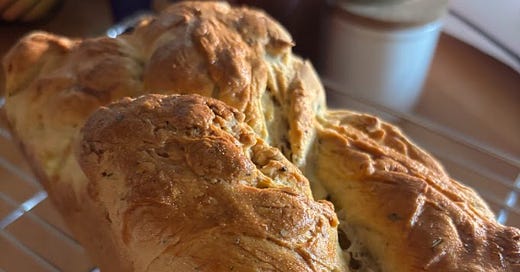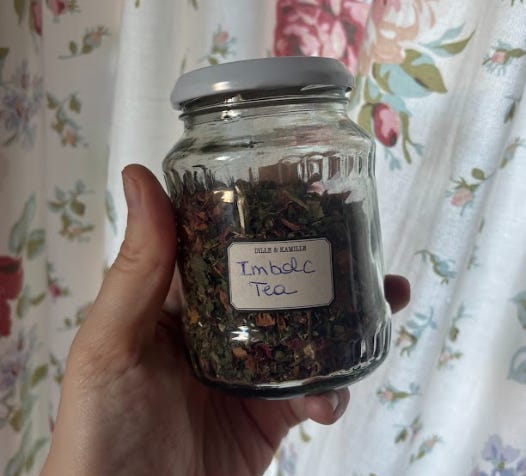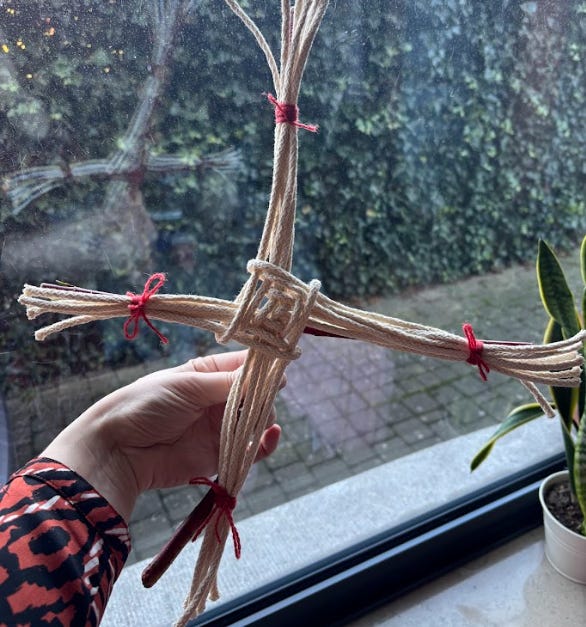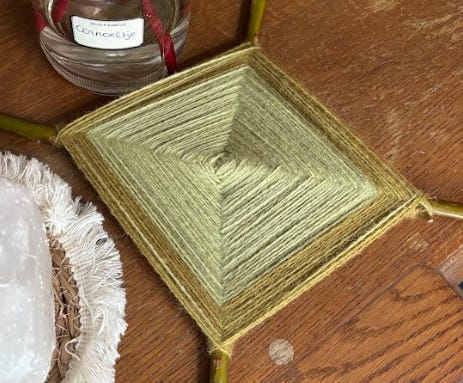Imbolc is, in my opinion, one of the most beautiful festivals on the wheel of the year, marking the transition from the deep winter slumber to the first whispers of spring. This year I delved deeper into its origins and traditions, adjusting my altar, baking sacred bread, and weaving symbols of protection and renewal. Here is a reflection on my Imbolc celebrations and the rich traditions behind them.
The origins of Imbolc: "in the belly" or "to milk"?
I previously explored one of one possible meaning of Imbolc as deriving from "in the belly”. However, another possible etymology ties it to the Old Irish word imb-fholc or oimelc, meaning "to milk." This interpretation aligns with the festival’s agrarian roots, as it coincides with the lactation of ewes, ensuring nourishment during the harshest period of the year. The return of milk was a powerful symbol of renewal, fertility, and survival, making Imbolc a celebration of life’s sustenance.
The pagan roots of candlemas & the pancake tradition
Candlemas, celebrated on February 2nd, is often seen as the Christian counterpart to Imbolc, honouring the purification of Mary and the presentation of Christ in the temple. However, its roots extend far deeper into the pagan world. Imbolc was historically celebrated with fire and candlelight, honouring Brigid, the goddess (and later saint) of fertility, poetry, and smithcraft. The tradition of eating pancakes on Candlemas may stem from sun symbolism—round, golden, and warm, they echo the returning light and the first stirrings of the sun’s power. In my family, we upheld this tradition today, enjoying pancakes together in the glow of candlelight, celebrating both nourishment and renewal.
An Imbolc altar: adjusting for the season
To mark the shift towards spring, I adjusted my altar to reflect Brigid’s sacred presence. Fresh white and green(ish) elements, symbols of fertility and renewal, took centre stage. Candles, representing the returning light, burned brightly beside a bowl of milk and offerings of seeds. My Goddess statue, a central figure in my practice, stood beside woven symbols of protection, reminding me of her guidance through the threshold of seasons. Want to know how it looked like? Check it on my Instagram account.
Pain au lait aux herbes: A sacred Imbolc bread
This year, I tried a new recipe: Pain au Lait aux Herbes, following the guidance of The Crafty Herbalist. This enriched milk bread, infused with herbs, is particularly popular in Flanders. Its significance may lie in the region’s deep-rooted agricultural traditions and historic reverence for dairy as a sacred and nourishing force. The addition of herbs, often protective or healing, aligns with Brigid’s associations with both health and sustenance. I added some extra herbs which are not in the original recipe, making it my own. I included a.o. nettle. Besides that, I also created a herbal tea blend that goes well with it:
Imbolc tea recipe
Put 4 table spoons of nettle, 2 table spoons of dandelion root, 2 table spoons of rose petals, 1 table spoon of spearmint and 1 table spoon hibiscus in a jar, close it and shake really well. For 1 cup of tea, you‘ll need 1 tea spoon of herbal tea.
Weaving a Brigid’s Cross (with a twist!)
Traditionally made from rushes, the Brigid’s Cross is one of the most recognizable symbols of Imbolc, often hung in homes for protection. Without suitable rushes on hand, I opted for a macramé version—an artistic interpretation of this sacred symbol. Though unconventional, the act of weaving itself carried the same intention, connecting me to the long-standing tradition of crafting symbols of blessing and safeguarding for the home.
Brigid’s Eye: A Goddess’s watchful presence
This year, I also crafted a Goddess Eye, inspired by the Ojo de Dios but adapted to honour Brigid. Weaving the intersecting lines of yarn, I envisioned it as Brigid’s watchful eye, bringing insight and protection. The rhythmic motion of wrapping and crossing the threads felt like a meditative act, a moment of devotion dedicated to the goddess of inspiration and transformation.
Honouring the threshold of spring
This weekend, I took the time to feel thoroughly, to connect… and I felt the quiet yet potent energy of Imbolc settling into my home. Through milk, fire, sacred weaving, and shared meals, the presence of Brigid was woven into the fabric of my day. May her light continue to guide us all as we step closer to spring’s embrace.








